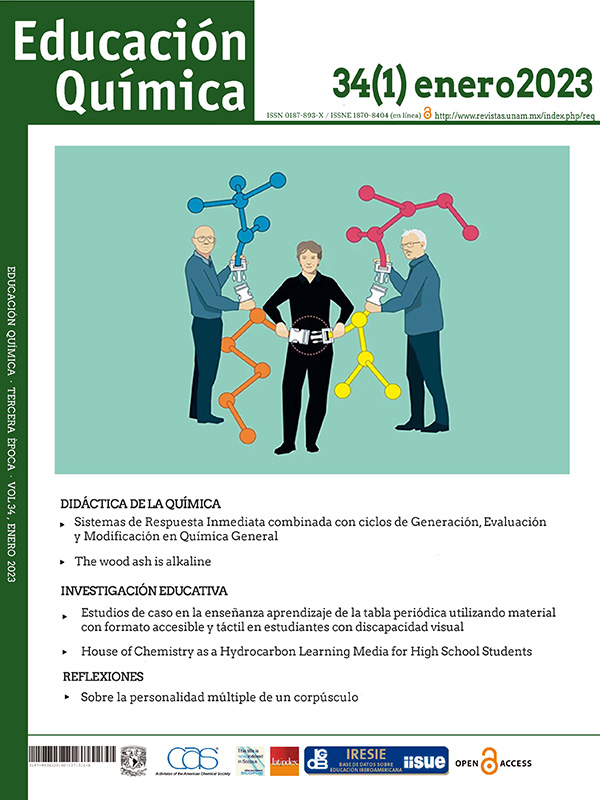Versatile as no other, click chemistry and its relevance in multiple areas: From materials science to pharmaceutical research
Main Article Content
Abstract
In 2022, the Nobel Prize in Chemistry was awarded to Carolyn R. Bertozzi, Morten Meldal, and K. Barry Sharpless for their contributions to the development of click chemistry and bioorthogonal chemistry. The significance of this type of reaction lies in the fact that, due to its simplicity, selectivity, efficiency, and tolerance to different media, including aqueous, it has impacted not only on the synthetic chemistry of complex molecules and materials, but also in the pharmaceutical area, since the application of this type of reaction allows the formation of conjugates with biomolecules such as proteins, opening the door to the exploration and understanding of various biological processes in living organisms to access more efficient targeted therapies. At UNAM’s Materials Research Institute, we have successfully applied this reaction to directly modify some bioactive molecules like curcumin (a natural antioxidant), improving their physicochemical properties such as solubility and chemical stability. Also, applying click reactions were synthesized β-cyclodextrin derivatives as new drug carriers, incorporating highly branched substituents called dendrons that confer an adequate hydrophilic/hydrophobic balance. These modifications allowed us to optimize their passage through cell membranes by diffusion and their ability to encapsulate hydrophobic drugs.
Article Details
Citas en Dimensions Service

Educación Química por Universidad Nacional Autónoma de México se distribuye bajo una Licencia Creative Commons Atribución-NoComercial-SinDerivar 4.0 Internacional.
Basada en una obra en http://www.revistas.unam.mx/index.php/req.




